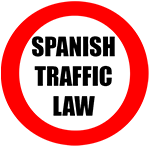1. Subject to the provisions of the following sections, temporary or permanent traffic limitations may be established on the routes covered by the legislation on traffic, motor vehicle traffic and road safety, when required by safety or traffic flow considerations.





2. On certain routes, or in parts or sections of them included within the interurban public roads, as well as in urban sections, including crossings, temporary or permanent restrictions may be established on the movement of lorries with a maximum authorised mass exceeding 3,500 kgs, vans, joined vehicles, articulated vehicles and special vehicles, as well as vehicles in general that do not reach or are not allowed to reach the minimum speed that could be fixed when, due to holidays, seasonal vacations or mass movements of vehicles, high traffic volume is foreseen, or when the prevailing conditions make it necessary or convenient.


Likewise, for security reasons, temporary or permanent restrictions may be established on the circulation of vehicles in which their own dangerousness or that of their cargo warrants their removal from urban centres, or from environmentally-sensitive areas or from sections such as bridges or tunnels, or their movement outside of peak traffic hours.
3. It is necessary to communicate the aforementioned restrictions to the Jefatura Central de Tráfico (Central Traffic Authority) or, where appropriate, to the traffic authority of the autonomous region handling the situation.
4. The restrictions will be published, in every case, a minimum of eight working days in advance, in the BoletínOficial del Estado (Official State Gazette) and, optionally, in the official journals of the autonomous regions affected.
In exceptional or unforeseen circumstances, when it is deemed necessary to achieve greater flow or safety of traffic, it will be the traffic officers responsible for traffic surveillance and discipline who, during the necessary time, will determine any appropriate restrictive measures to be taken.

5. In the case of an emergency, special authorisation may be granted for the movement of vehicles within the routes and time limits which are subject to the restrictions imposed in accordance with the provisions of the preceding sections, after justifying the absolute necessity of carrying out the journey along these routes and in the periods subject to restriction.
In these special cases, the registration number and main characteristics of the vehicle referred to, the transported merchandise, the routes affected and the special conditions applying, must be stated.
6. The authorisations referred to in the previous section will be granted to the authority that established the restrictions.
7. The restrictions on circulation regulated in this article are independent and do not exclude those established by other authorities according to their specific competencies.
8. Drivers of vehicles travelling on restricted roads without the authorisation mentioned in section 5 will be considered to be guilty of an infraction.


